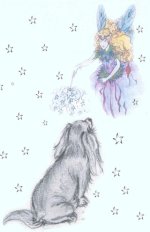Home
 About
Us About
Us
 How we
Operate How we
Operate
 Rehome a Cavalier Rehome a Cavalier
 Donations Donations
 News News
 Photo Gallery Photo Gallery
 Rescue
Stories Rescue
Stories
 Care of an Older
Cavalier Care of an Older
Cavalier
 Care of a Rescue Cavalier Care of a Rescue Cavalier
 Regional
Rescue Regional
Rescue
 Links Links
|
|
Care of a Rescue
Cavalier
The basic
needs of a Rescue Cavalier are no different to any other, but a little extra
thought may be needed to ensure he settles in to his new home quickly.
House training
Your dog may have been perfectly housetrained in its previous
home, but you may have the occasional' accident' until he becomes familiar with
his new surroundings and routine. A little patience may be needed and your
encouragement and praise when things ' go right' will speed this process up. He
shouldn't be chastised for mistakes and once he is used to his new home, should
once again, become clean.
Feeding
It will help your dog to settle in
quickly if you feed him the same food as he was having previously. A rapid
change of diet may lead to an upset tummy, especially when he is feeling
insecure from the change in home. After a few weeks you may gradually alter the
diet over a period of about a week. Directions on how best to do this are
usually found on the food packet. This usually entails mixing a small amount of
the new food in with the old, and gradually increasing amounts of new whilst
decreasing the other. After about a week the dog should be having the new food
alone with no ' tummy ' problems.
Grooming
All dogs like to feel
well groomed and a thorough weekly grooming session will keep your dog's coat
in good condition. A good bristle brush will remove dust and dirt from the coat
and also massage the skin keeping it healthy. A comb will be needed for the
feathers especially behind the ears where the coat grows fine and can knot
easily. Eyes should be wiped with damp cotton wool to remove excess tears and
gentle wiping around the ears will keep them clean. The ears should be checked
after a walk in grass as their seeds can lodge in the ear and cause discomfort
if not removed. A dog's teeth can be cleaned much like ours, using one of the
special doggie toothpaste available in most pet shops. Regular exercise on
roads should keep claws trim but if the dew claws have not been removed, these
may need regular clipping.
Other animals
If there are other animals
in the family care with introducing them to the newcomer will lead to a happy
household. It is understandable that you will want to give a lot of time and
affection to your new dog to help him settle, but this should not mean the
others are ignored. They will not appreciate a stranger coming into their house
and stealing all the limelight. The arrival of a new baby can make an older
child jealous and the care you would take to alleviate this is similar.
Children
Cavaliers are usually very good with children. They are an ideal
size and temperament. Your dog may not have lived with children before and he
must get used to their size, noise and little mannerisms. Sudden screams may
alarm or frighten him. He may not be used to the over exuberant hugs and loves
a small child can give. The child should be taught to respect the dog and until
the dog is completely relaxed in the child's company, their time together
should be supervised. This is an ideal time for teaching the smaller child to
put their toys away after playing. The dog will not realise what are his toys
and which belong to the child. Tears will saved if the child tidies up. If the
dog does start to chew something it shouldn't, take it away but give him one of
his own toys. This way he will soon learn what he can and can't touch.
Exercise
Everyone likes seeing their dog running round the park having fun,
but until your dog has completely settled in, walks should be taken on the
lead. The extending leads give the dog freedom but you are still in control.
|


